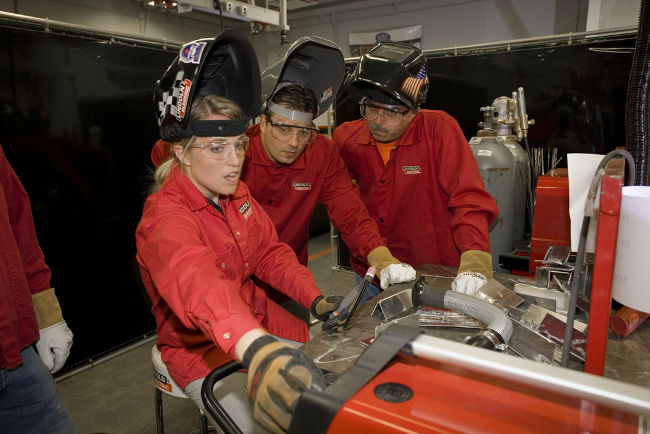
Whether you’re looking to improve your welding skills or embark on a welding career, a good place to start for many is a welding school. There are some things you need to keep in mind.
First, if you’re able to travel (or you already live nearby), you might consider one of the top welding schools like the Tulsa Welding School, Hobart Institute of Welding Technology , Lincoln Welding School, or even a program like Wyotech’s Custom Automotive Fabrication program. (1)
If you don’t have the ability to get to one of these schools (and even if you do) The American Welding Society (AWS) is great place to start. First, there is a Welding School locator online so you can find something closer to you. You can also find an AWS chapter (section) near you (hopefully) where you can meet people working in industry in various capacities. The AWS also offers welding school scholarships both from the national level and from your district.
Another way to identify the best welding schools in your area is find the companies that employ welders in your area and ask there. If it’s a large corporation it may take more than one phone call and it may get frustrating to find the right person to talk to. Be persistent, but polite–remember this company may be your future employer!
Once you’ve identified some schools, you’ll want more information before you sign up. Call and ask about their accreditation.
Set up a meeting with an admissions counselor. These folks can help you fill out the right forms and deal with the red tape. They can help you with financial aid and student loan information and they’ll probably be able to direct you to the right contacts in the welding department and may even help you set up a meeting… you’ll want to go there next.
Ask what welding processes they teach, which certifications they offer, and ask about the school’s placement program and the success rate.
Set up a time to visit a classroom, and a hands-on workshop–you definitely want a program that offers lots of hands-on-equipment time because the only way to really learn welding is by doing, but realize some things like blue print reading, mathematics, metallurgy, etc. will be taught in the classroom.
While you’re observing, look around. Does the equipment look well maintained? Are there enough machines and tools for everyone?
And talk to the students. Ask what they like best about the program. Ask what they would like to see different in the program.
There are many opportunities in the welding industry from hands-on work in fabrication shops or in the field, and if you’re interested in even more technical study consider a degree in welding engineering from a university. The welding engineer works in design and production primarily of manufactured or fabricated product, including material selection, manufacturing methods, tooling, operator training, quality control, performance evaluation, sales, and service.
Whatever path you take, your best bet for success is to always be learning and improving your skill set whether its from co-workers, training programs within your company or on your own. The more you know the more opportunities you’ll have.
(1) We profiled Erin Justice, trainer at Lincoln’s welding school back in 2008 over on the CarmenElectrode.com blog.

